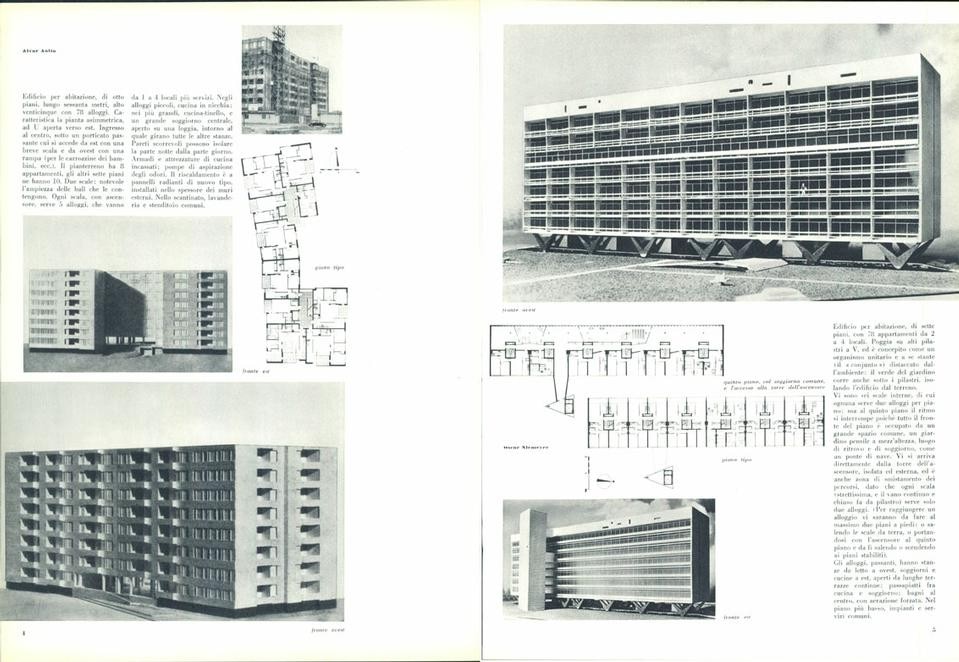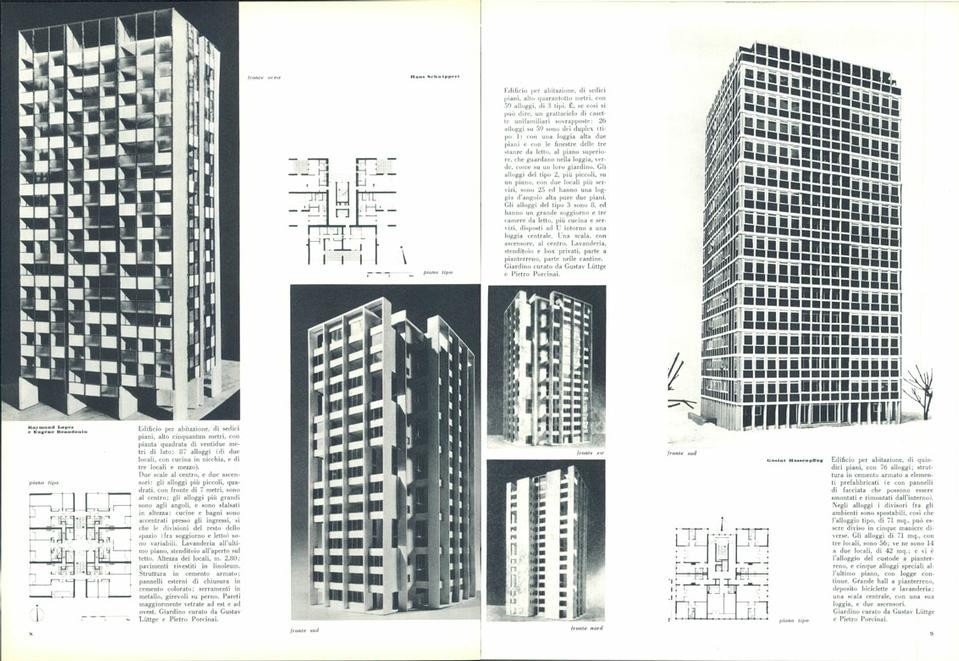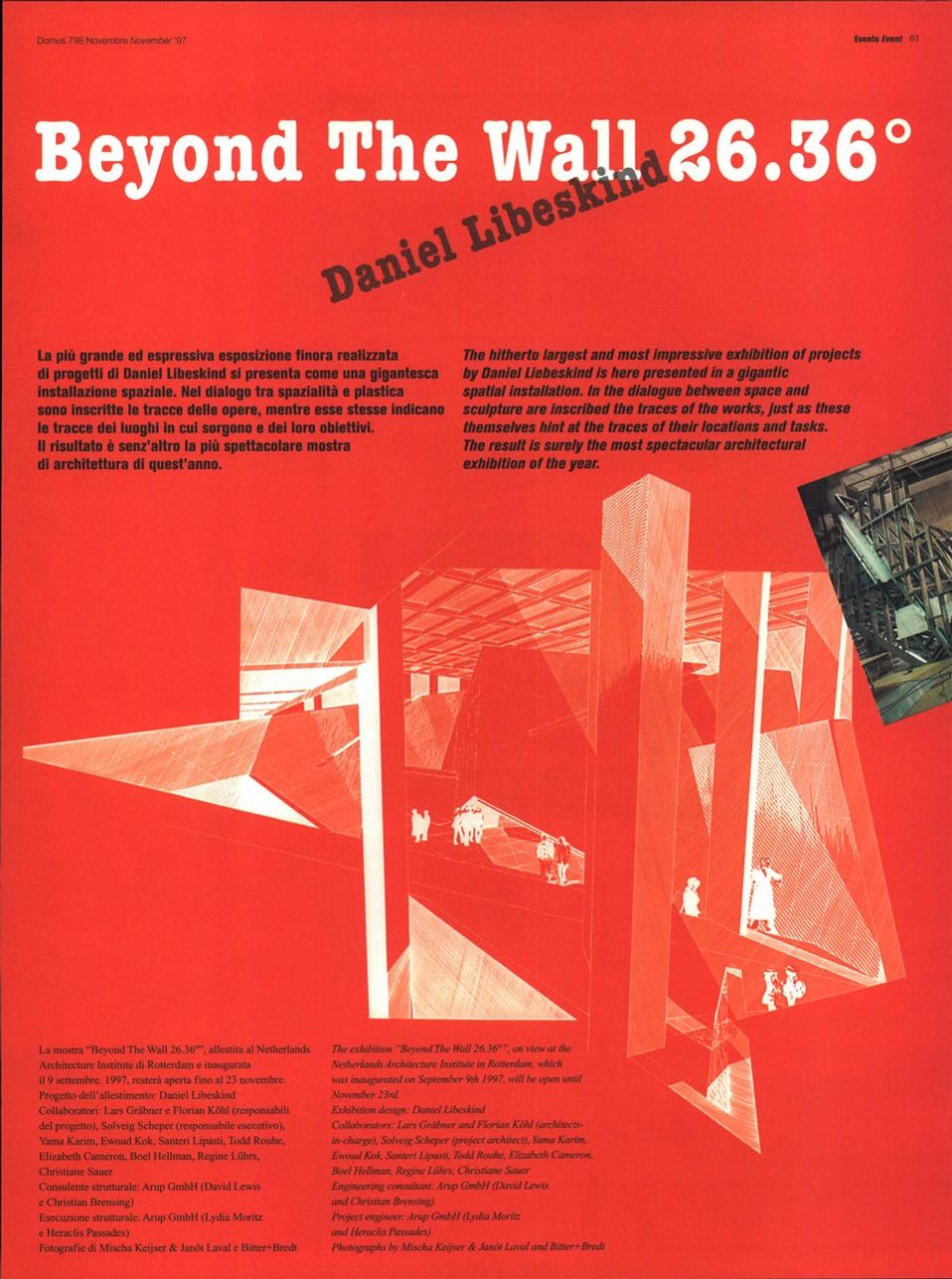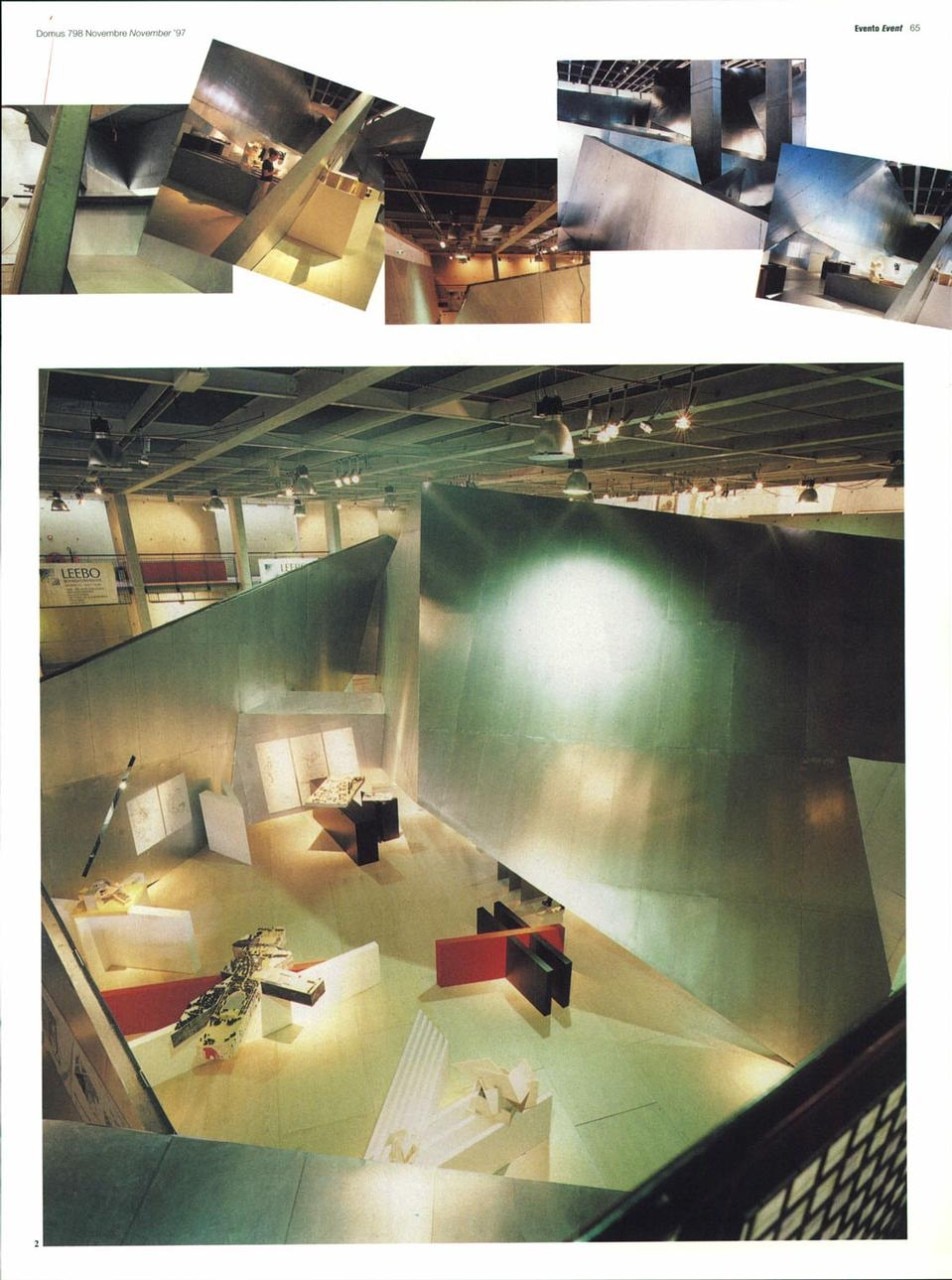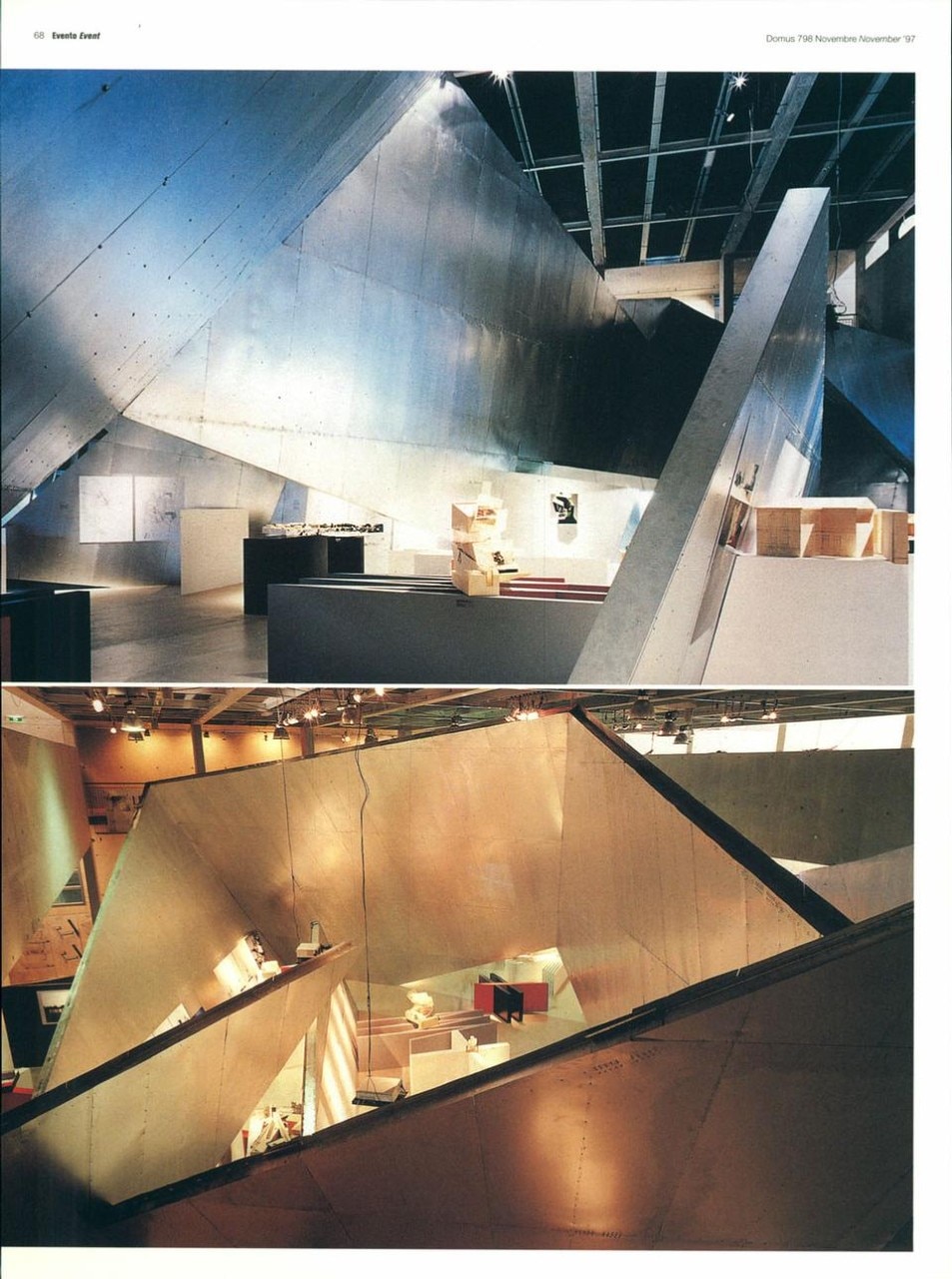It would seem that since architects design forms in space, and exhibitions are forms in space, that exhibitions are, by nature, architecture. This strikes one as particularly self-evident, given Mary Anne Staniszewski's writing on art displays and their development alongside architecture, but it becomes categorically problematic when one encounters exhibitions that feature architectural work. How can architecture be at once the object and the context of display? This article will address the ways in which exhibitions serve also as a separate activity to further the discourse of architecture – beyond the expressive potential of its de facto object, the building. What we have come to call the architecture exhibition encompasses a wide range of activity, spanning a multitude of intentions and authorial positions. Everything from projects like the Interbau housing developments built as part of the International Building Exhibition in Berlin (1957); to the exhibition of architectural images and drawings at MoMA in 1932 that helped organizers Alfred Barr, Henry Russell Hitchcock and Philip Johnson define an international style within modern architecture; to the public relations presentation boards displayed after major competitions and commissions or celebrating the completion of construction; are discussed as architecture exhibitions. Not only are these disparate forms of display produced with vastly different objectives, scales and audiences, they also prove to be irreconcilable expressions of architecture. While each showing different aspects of the field, these variations also point to a fundamental problem of exhibiting architecture – that of representation.
Besides the construction of actual buildings for exhibition, as in the case of Interbau, architecture exhibitions are almost always exhibitions of representations of architecture, in drawings, photographs, models, films and more recently, new media. The idea that these architectural representations should be displayed rather than any architecture itself – a condition that would bemuse artists – sprang from the École des Beaux-Arts education of the 19th century, when the apprenticeship model of architectural education prevalent in France until this time gave way to the academic model, which systematized training through master classes, design assignments, and competitions culminating in prizes and exhibitions (Paul P. Cret, "The Ecole des Beaux-Arts and Architectural Education", The Journal of the American Society of Architectural Historians, Vol. 1, No. 2, Apr. 1941, University of California Press 1941). Critics have noted that the school's constant call for competitions – which was their only proof of matriculation, as no attendance was recorded – produced two pedagogical problems. Firstly, students came to produce work that was not necessarily the best, but was designed to appeal to particular adjudicating professors (a problem that persists today). Secondly, projects were judged in exhibition as plan, sections and elevations drawn on rectangular sheets of paper, of which the plan, or parti, was deemed most important of the three (Jean Paul Carlhian, "The Ecole des Beaux-Arts: Modes and Manners", in Journal of Architectural Education, Vol. 33, No. 2, Beginnings, Nov., 1979, 12). The significance of the exhibition as a means of architectural communication became tied to the presentation of these representations – the beau plan can be appreciated pictorially, apart from other spatial, formal and contextual concerns. Thus the images of architecture, while not explicitly architecture, took on the character of artworks on display – original sketches and drawings, bearing the hand of the architect, became prized as objects in themselves. At the Bauhaus architecture school in Weimar, exhibitions were similarly employed as a means to display student work in the form of drawings and models of buildings and other design objects. Save for, perhaps, the unique exception of the Sommerfeld House (1920/21) where Bauhaus students each designed different parts, details and furnishings of a house, the Bauhaus exhibitions chiefly served to present the school's annual creative output and justify its financial backing from the local government. In short, neither the École des Beaux-Arts nor the Bauhaus, which both helped to establish and codify the basic habits for exhibiting architecture, ever sought to use the exhibition per se as an experience of architectural expression – but rather as a venue for represented concepts. Like the Bauhaus exhibitions, the display of building design as a means to address professional concerns such as funding and promotion continues today as the unchallenged raison d'être of the architecture exhibition.
In the past decade, the Netherlands Architecture Institute (NAi), under the direction of the Kristin Feireiss, has sought to disturb this established formula. In 2001 it published a volume of writing on architecture exhibitions – a compilation of the only existing scholarship on the topic. With texts by Bart Lootsma, Jean-Louis Cohen, Elizabeth Diller and Catherine David, amongst others, the book also contains a section on some of the NAi's most photogenic exhibitions, which, commendable in both presentation and scope, echoes the difficulty of conveying architecture ideas in exhibition and the problem of representation identified by the writers. Daniel Libeskind's exhibition at the NAi, "Beyond the Wall, 26.36°" (1997), is a case in point. Intended to challenge the traditional form of the architecture exhibition and to present something beyond "mere representation of a building or of a particular work," Libeskind wanted the experience of the space, the "fusion of seemingly irreconcilable dimensions," to be the principal object in the show. Using the dimensions of the large exhibition hall as source material for a series of geometric manipulations, Libeskind installed building-sized, folded metal surfaces throughout the space – a kind of building within a building. His glinting, canted forms that seemed to shift and twist in midair, produced a distinctive sensual experience contingent upon the visitor's motion within the space. Libeskind recognized the exhibition as an opportunity to experiment with ideas that would be more difficult to implement in building projects. Some of his metal surfaces moved automatically, producing a space of continuously changing dimensions – a conceit often imagined, but almost never attempted in professional practice. However, by supplementing the installation with drawings and models from the architect's studio, Libeskind and the exhibition's curator, Kristin Feireiss, in fact discredited the exhibition's expressive potential – its ability to convey architectural concepts physically, through space, lighting and materials. Hanging drawings of past designs seems to be a token gesture to ensure that a certain public would perceive "Beyond the Wall" as an architecture exhibition. Whereas Libeskind's architecture, physically built in the exhibition, could have demonstrated previously untested architectural ideas, in the end it became an instrument of scenography – his moving metals slabs serving as the supporting armature for framed drawings.
Fundamentally, the curator mediates between and makes available the exhibited objects and ideas and their relevance to an audience. The exhibition context provides one of the few venues where cultural artifacts are given a voice, and where the public is encouraged to collectively ascribe meaning and significance to the products of human culture. Particularly for architecture, the curator's role is even more crucial, given that architecture is considered and reflected upon in a far more casual way by the general public than fields including film, music and even literature. The ubiquity of "architecture" in cities and our everyday encounters with buildings has produced widespread obliviousness to the architect's work as a thing of consideration.
The architecture curator's function is thus twofold. Firstly, to make exhibitions of architecture, not its representation; and secondly, to cultivate an audience with the spatial sensitivity to engage with the built environment in a conscious and potentially more responsible way. Exhibitions like "Die Wohnung unserer Zeit" (The dwelling of our Time) – organized by Mies van der Rohe in Berlin in 1931, twenty-three full scale houses were exhibited, six of which were free standing – or Barry Bergdoll and Peter Christensen's 2008 MoMA show "Home Delivery" (which included five prefabricated houses built to scale on the museum's fifty-fourth street lot), are difficult to launch due to their logistic complexity and large financial investment. How then, should we exhibit architecture without recourse to its representation if large-scale installations – just short of erecting a building – are not generally possible? What becomes necessary to challenge is the definition of architecture itself. Without excessive elaboration that would lead our argument completely astray, it bears recognizing that 'architecture' and 'buildings' are not synonymous categories. Just as not all paintings are artworks, not all buildings are works of architecture. In the United States, no more than a quarter of the built environment has ever required architects, and only one in ten houses have demanded their services (Avi Friedman. "Developing Skills for Architects of Speculative Housing". Journal of Architectural Education, Vol. 47, No. 1, Sep., 1993, p. 49). Most buildings are built by developers and engineers, the least of whose concerns are architectural. K. Michael Hays, in his introduction to Diller + Scofidio's 2003 Whitney Museum exhibition catalogue, advocates architecture as the spatial practice of a body of knowledge that allies forms with socio-historical contexts, and that is articulated in various facets of human culture of which buildings are but one. Following this line of reasoning, to successfully exhibit architecture would entail a process of detecting those architectural moments that can find expression within the limitations of exhibition spaces. Within fine art (Olafur Eliasson, Gordon Matta-Clark), music (Steve Reich, John Cage), and film (Mike Figgis, Christopher Nolan), one gleans architectural ideas that, when exhibited, might reveal to architects dimensions of their discipline that are neglected in the practice of building design. As such, exhibitions can themselves produce, rather than merely convey knowledge. And just as the other fields cited above are able to express architecture in ways unavailable within the traditional bounds of its profession, the call for exhibition making as a separate discipline from architecture, is made precisely to frame it as a practice capable of a new architecture, rather than one that merely represents it. The architecture exhibition, in providing a spatial experience of architectural ideas, in fact produces architecture.
Carson Chan, architecture writer and curator based in Berlin
